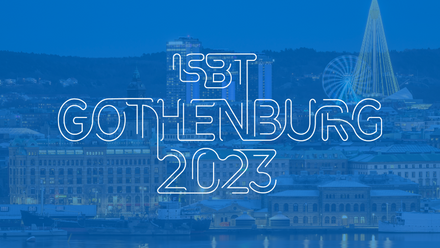The Finding Rare - well done! session included the following presentations:
1. Gwen Clarke: Managing Rare Blood: A sustained challenge around the globe!
2. Tanya Powley: Rare Blood Donor Programs: ISBT working party survey
3. Margaret A. Keller: The American Rare Donor Program’s Support of Patients with Sickle Cell Disease
MODERATORS: Vered Yahalom, Linda Bodecker Zingmark
After the presentation, there was a questions and answers session, which is also included in the recording.
Abstract
Rare blood donor programs: ISBT working party survey
T Powley1,2, G Jacko1, N Thornton2,3, I Sareneva2,4, T Peyrard2,5, S Nance2, C Lomas-Francis2, V Yahalom2,6
1Clinical Services and Research, Australian Red Cross Lifeblood, Brisbane, Australia, 2Working Party on Rare Donors, ISBT, Amsterdam, Netherlands, 3International Blood Group Reference Laboratory, NHS Blood and Transplant, Bristol, United Kingdom, 4Helsinki and Uusimaa District Hospital (HUS) Laboratory, Helsinki, Finland, 5National Reference Department of Immunohematology and Rare Blood, Etablissement Français du Sang, Paris, France, 6Blood Services & Apheresis Institute, Rabin Medical Center, Petach Tiqva, Israel
Background: The ISBT Working Party on Rare Donors (WPRD) promotes international collaboration, education and exchange of information related to finding and providing rare blood. Key activities aim to increase rare donor numbers, by promoting growth of rare donor panels and to identify and assist with overcoming challenges with supply.
Aims: Provide an overview of rare donor programs and collate information to assist overcoming the challenges experienced with importing or exporting rare blood.
Methods: A survey was sent to all WPRD members focussing on the following elements:
- Rare Donor Program
- Red Cell Product Specifications
- Frozen Inventory
- Ordering & Shipping
Information about the following rare phenotypes was requested - Ge: –2, –3, Jk(a–b–), Ko, Kp(b–), MkMk, RH:-34–, U–, p, Sc:-1, En(a–), At(a–), Di(b–), Jr(a–), Rhnull, Vel–, D– – and Oh.
Data analysis was based on individual programs to allow for more than one program or database in a country and separate survey responses were provided.
Results: Members from 20 countries out of the 27 (74%) represented on the WPRD provided responses. In 19 countries there is some form of rare donor program. Two programs are facility based, one is regionally based, two are working towards national programs and 15 are national programs.
Fifteen programs used a similar definition for a person with a rare blood group. Negative for a high prevalence antigen where the frequency of the antigen negative phenotype is < 1 in 1000 or where a combination of antigen negative phenotypes has a prevalence of <1 in 1000. The remaining 6 programs generally varied in the frequency for example, ≤1:500, <4/1000 or <1% of the negative phenotype.
Sixteen respondents maintained a frozen inventory, 14 used the Haemonetics® ACP® 215 Automated Cell Processor for glycerolisation and deglycerolisation. Frozen expiry ranged from 10 to 40 years with 11 assigning a 10-year expiry, seven could retain exceptionally rare phenotypes beyond this expiry. SAG-M was the most common additive for thawed cells with an expiry of 24–72 h, two respondents assigned a 7-day expiry when using a closed system. A longer thawed expiry, 7–14 days was assigned when AS-3 or saline with low concentration dextrose was used in a closed system.
There were 11,539 donors identified with the rare phenotypes of interest, 41% (4679) were group O and 3.1% (356) were group O negative. The most common rare phenotype was Di(b-), 39% (4460) found in eight programs with most donors identified in Japan (4324). The Kp(b–) phenotype was found in the greatest number of programs, whilst MkMk and Sc:-1 phenotypes were reported by the least number of programs, and MkMk also had the lowest number of donors (3). Most programs had small numbers or no donors with some of the rare phenotypes.
The number of rare units supplied each year varied significantly with six programs supplying less than 10 units, seven supplied 10–100, three supplied 100–1000 and three supplied >1000 units per year.
Eighteen programs indicated that they add rare donor phenotypes to the ISBT International Rare Donor Panel and 11 utilised the ISBT WPRD Blood Shipment form. Where incompatible blood is transfused, 10 indicated that they would utilise the ISBT Outcome of Incompatible Transfusion form.
Summary/Conclusions: The definition of a person with a rare blood type varied slightly between respondents, reflecting demand and local population variation. The low numbers or lack of donors with some of the very rare phenotypes highlights the need to increase the number of rare donors and establish new programs. The continued cooperation between member countries of the WPRD is essential to support patients with rare blood needs.




